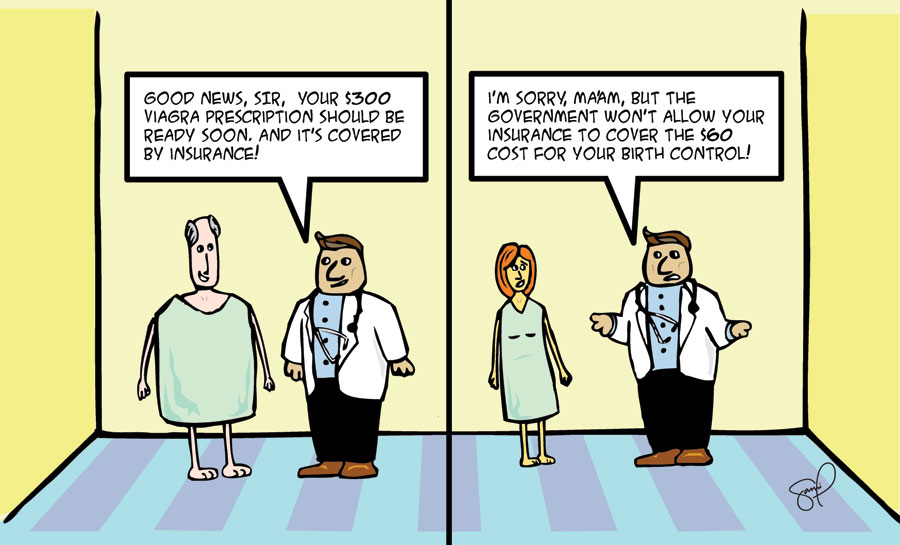
By age 45, half of all women will have experienced an unintended pregnancy, according to the Guttmacher Institute.
These unplanned pregnancies have serious consequences. The Minnesota Department of Health reported that such pregnancies have negative outcomes for both infants and parents. Infants are more likely to be abused and die in their first year of life.
Meanwhile, parents must cope with reduced education and career attainment, an increased dependency on welfare and heightened risk for divorce or domestic abuse.
Unintended pregnancy is clearly a larger social issue than it seems on the surface, but increasing access to female birth control would easily resolve the problem.
While The Washington Post reported 70 percent of insurance policies provide coverage for erectile dysfunction medication, few policies provide equal coverage for birth control. Instead, women must pay $180 to $600 a year for birth control medication, according to Planned Parenthood, with only a few institutions, like DePaul University in Chicago, providing insurance coverage.
Birth control also has many purposes other than contraception. According to a study Rachel K. Jones of the Guttmacher Institute conducted, 14 percent of women use the pill solely for non-contraceptive purposes, such as for reducing cramps and menstrual pain, menstrual regulation, acne treatment and to reduce endometriosis, where cells from the lining of the uterus grow outside of the uterine cavity.
Fifty-eight percent of women use birth control for these reasons along with contraception, and studies from the National Cancer Institute and the National Institute of Health show using the pill decreases the risk of ovarian and endometrial cancer.
Fortunately, the Obama Administration’s Affordable Care Act provides a solution to the unavailability of birth control medication. A mandate related to birth control would require all employers to provide their female employees’ insurance coverage for preventive care services. The administration estimated cost per year to be about $360 per person, which is lower than the current median price of $390.
By increasing access to contraceptives, the United States will additionally save more than $11 billion a year solely from preventing unwanted teen pregnancies, according to the Centers for Disease Control and Prevention.
While the bill has received criticism for allegedly infringing upon first amendment rights like freedom of religion, these claims are illegitimate.
All houses of worship are exempt. Religiously affiliated universities and hospitals, however, still must provide health insurance for their employees.
The Affordable Care Act’s birth control mandate is a laudable start to improving the availability of birth control. By making employers pay for insurance coverage, it places women on equal ground with men who have no difficulty receiving coverage for erectile dysfunction treatment. In doing so, the government will also cut down on the number of unwanted pregnancies and, more importantly, the number of women who die each year from complications related to an illegal abortion.
The birth control mandate is another step in the right direction for health care in the United States.
In this political year, as presidential and senatorial elections loom in the near future, voters should avoid a knee-jerk reaction when filling out ballots. Don’t simply stay within party lines — consider what’s best for public health.
By The Rock staff













































































